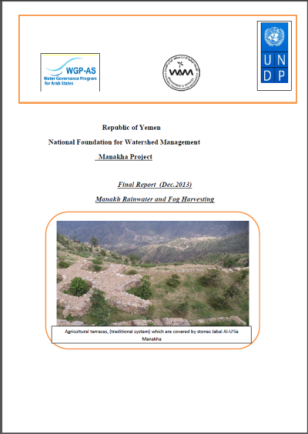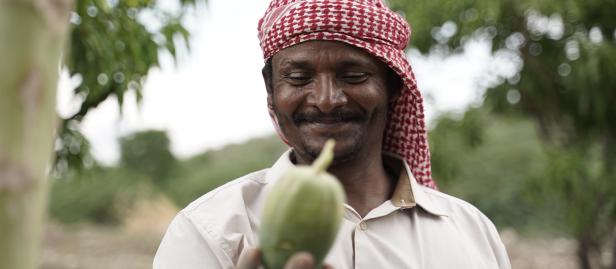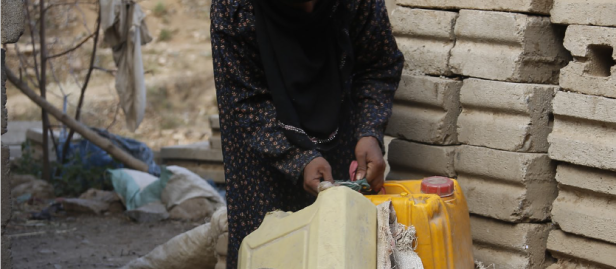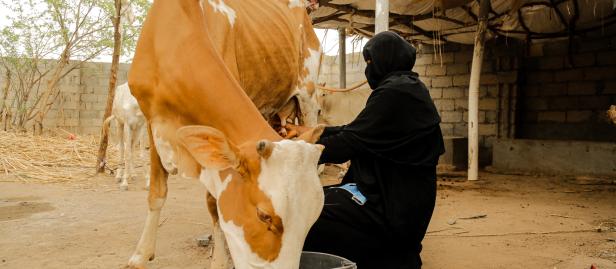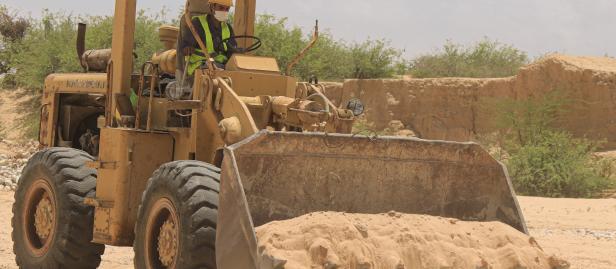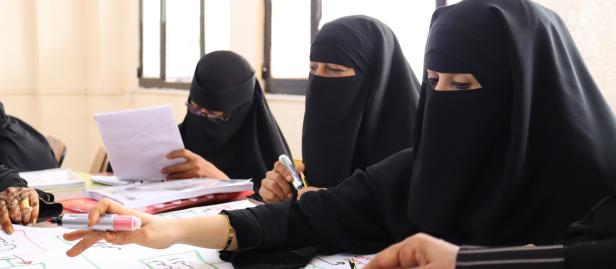Manakh Rainwater and Fog Harvesting
Manakh Rainwater and Fog Harvesting
September 1, 2014
Most regions of the country suffer an acute shortage of drinking water as well as water for irrigation and other usages. Yemen is among the ten poorest world nations in water resource, where the water crisis impact urban and rural areas alike. Among the most affected comes; women; girls and children, who bear the biggest burden collecting water from rock tanks and the remaining wells.
Being rural area, the entire population relies on rainfall as the sole source of water. Network water and other sources are non-existent and not available in the area. The average rainfall in the area is about 250-350mm annually. Yemen has recently been experiencing frequent and pro-longed droughts induce by declining rainfalls. This has serious impacts on the livelihoods of rural inhabitants whose main source of water is reliant on rainfall. Women and girls usually spend considerable amount of time in fetching water for household use, and animal drinking. Due to recurrent droughts, and lack of green cover, soil fertility has also severely impacted. Being the sole source of water, rainwater harvesting establishments have been deployed by local inhabitants as an effective water development and management technique. Rainwater harvesting techniques have been essential in collecting and storing rainwater during rainy seasons for irrigation and household uses without which livelihoods of local communities in the area of Manakha would necessarily be highly vulnerable, and hence less stable.
The scarcity of water is a major challenge ahead of the country and forms a main cause of poverty spread as a result of impacting the topmost industry of the nation – the agriculture sector. This situation has created great demand on resources leading many to migrate to towns with all potential outcomes of such migration both in their own origin areas and the new habitats. These impacts include; abandoning farmland; neglecting agriculture; deterioration of soil; the shrinking of the green; threatening food security; erosion of mountainsides that leads to speedy flushing of water downstream; the decline in underground water recharge levels; droughts; and a changing ecological service structure. The area of Manakha and Al-Magharibah Al-U'lia in specific saw an increasing water deficit ignited by a population boom that have added another pressure on the thin supply of water supplemented by climate change and a rigid topography.

 Locations
Locations